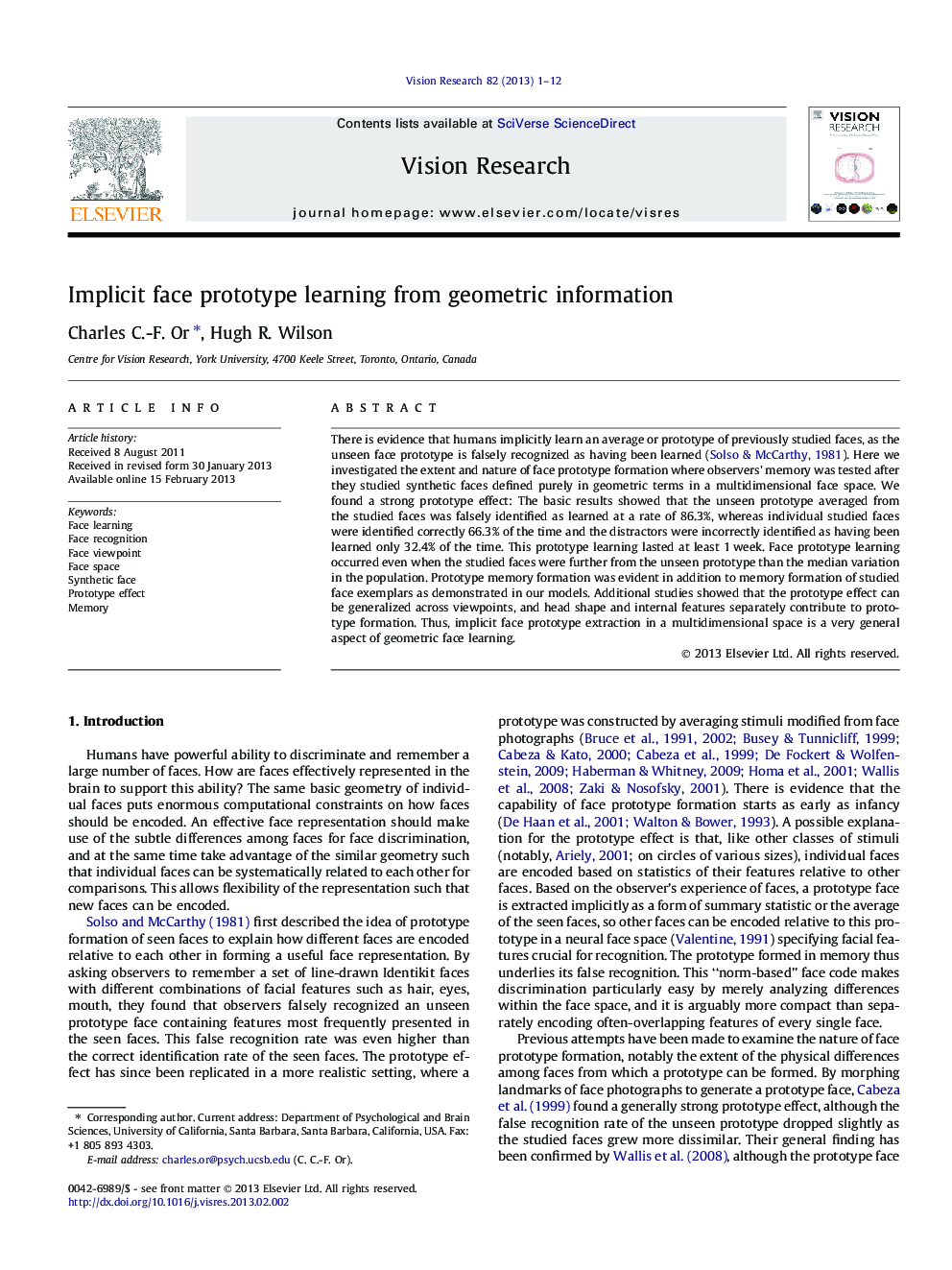| Article ID | Journal | Published Year | Pages | File Type |
|---|---|---|---|---|
| 4033812 | Vision Research | 2013 | 12 Pages |
There is evidence that humans implicitly learn an average or prototype of previously studied faces, as the unseen face prototype is falsely recognized as having been learned (Solso & McCarthy, 1981). Here we investigated the extent and nature of face prototype formation where observers’ memory was tested after they studied synthetic faces defined purely in geometric terms in a multidimensional face space. We found a strong prototype effect: The basic results showed that the unseen prototype averaged from the studied faces was falsely identified as learned at a rate of 86.3%, whereas individual studied faces were identified correctly 66.3% of the time and the distractors were incorrectly identified as having been learned only 32.4% of the time. This prototype learning lasted at least 1 week. Face prototype learning occurred even when the studied faces were further from the unseen prototype than the median variation in the population. Prototype memory formation was evident in addition to memory formation of studied face exemplars as demonstrated in our models. Additional studies showed that the prototype effect can be generalized across viewpoints, and head shape and internal features separately contribute to prototype formation. Thus, implicit face prototype extraction in a multidimensional space is a very general aspect of geometric face learning.
► Implicit face prototype formation occurs throughout face space. ► The unseen prototype was falsely identified as seen more often than studied faces. ► Prototype formation occurred even when distinctive faces were studied. ► Face prototype effect generalized across views and face parts.
